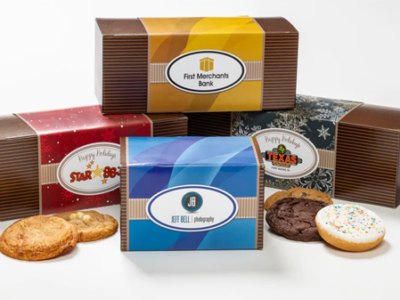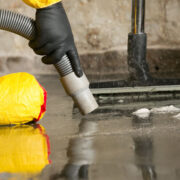Sheet metal fabrication is a popular and durable way to create components for a variety of industries. It can be used to make anything from small parts for home and work, to large-scale pieces for manufacturing purposes.
The first step in sheet metal fabrication involves establishing the vision for the product. This may involve the creation of a 3D model, and it also involves obtaining specifications for the part or product.
Cutting
Sheet metal fabrication is a process that transforms flat sheets of metal into parts and components. It’s a versatile technique that can produce a variety of products and structures, including aerospace parts. The processes of cutting, forming, and joining play an important role in sheet metal fabrication.
The first step in sheet metal fabrication is cutting, which uses specialized tools to cut metal sheets into desired shapes. Different types of cutting processes can be used, depending on the needs of the project.
Mechanical presses power most sheet metal cutting operations, though electric drills are also sometimes used. The lower apparatus in a press carries the work piece, secured to it by a pressure pad. A v-shaped ring projecting from the bottom of the pressure pad holds the work in place while the punch applies force to it.
As the punch moves down, the lower die pushes up with the same force, causing plastic deformation of the surface of the metal. This process is known as rollover, and it’s essential to the success of the cutting operation.
When the upper die reaches the edge of the sheet metal, it cuts the material through a kerf. This kerf is called the cutting kerf and is usually 0.3 mm on average, but it can vary slightly based on the materials being cut.
The size and shape of the kerf should be determined by the design of the part, as well as the material being cut. In general, a kerf should be as small as possible without being too thin or sharp.
It’s also important to use holes and slots that are designed properly. These features should have a diameter that is as large as the thickness of the sheet metal and be evenly spaced throughout the part. Holes should be oriented so that they are at an angle to the neutral axis of the metal, and not too close to the edges.
Another important consideration when cutting is the amount of clearance between the punch and the die hole. Improper values can cause the metal to break incorrectly, which is not desirable and can result in burrs.
Forming
Sheet metal forming is the process of creating custom parts from sheets of a given material. It is a common fabrication technique used in a variety of industries, including automotive, aerospace, and manufacturing. In addition to being a cost-effective way to create functional end use parts, sheet metal forming is also a great way to ensure a consistent quality product.
Forming is a multi-step process that requires multiple tools and processes. It can be complex and requires a lot of skill to do correctly. This means that it is a good idea to have some background knowledge of the various methods used before you start experimenting.
The first step in forming is to determine the type of material and thickness you need. There are standard measurements for different types of sheet metal, and it is important to know them before you get started.
One of the most common measurements in millimetres, but there are other units as well. For example, a gauge is a unit that describes a metal’s thickness in relation to its weight per square foot.
Another important measure is the die ratio. A die opening that is 6 to 18 times the sheet thickness is considered a reasonable die ratio for most metals.
Using a die that is too wide or too small will cause problems during the bending process. This can lead to distorted features or the creation of holes in the finished part.
Bending is an important forming technique for sheet metal because it can form a variety of shapes. It can be performed manually or using a press brake machine. However, a skilled engineer is required to perform the bending properly.
The bending of sheet metal is a highly specialized operation because the material is susceptible to “spring back.” This happens when the bending process forces the metal to try to regain its original flat structure, which can lead to damage. Fortunately, there are some tricks you can use to overcome this problem.
Besides the bending method, a variety of other forming processes are used in sheet metal fabrication. These include die-cutting, punching, stretching, roll forming, and hydroforming. Some of these techniques overlap with each other, but they all share the same basic principles.
Joining
When you are working on sheet metal fabrication, there are a number of ways to join disparate pieces. Each of these methods comes with its own advantages and disadvantages that you should consider when selecting which method to use for your product assembly.
Welding is one of the most commonly used joining methods for sheet metal fabrication. It fuses two pieces of metal together by melting them while adding a filler material that helps them form a permanent joint. Welding joints are stronger and more rigid than riveted joints, which is a good thing if you want to make a sturdy product.
Brazing is another sheet metal joining technique that fuses two pieces of metal without melting them. This process uses a filler metal that melts at a lower temperature than the sheets of metal to be joined, and it solidifies into a permanent joint.
Self-riveting is another joining method that involves using mutual deformation between the sheet metal parts to create a bond that locks them together. This is a simple and effective method that can be used with varying thicknesses of metal and types of materials.
Crimps and notches are also sheet metal joining techniques that don’t require fasteners. This type of joining method relies on the part design and can be applied to all kinds of sheet metals, including stainless steel.
Tabs are another popular sheet metal joining technique that can be applied to all kinds of materials, including soft steel. These are easy to fabricate and are often used to connect different components of the same product.
The main difference between tabs and rivets is that tabs are shaped in a buckle with a clamping slot, while rivets are shaped like a sleeve and pulled through a hole in the corresponding sheet metal parts. Both of these are convenient and quick to assemble, but they may not be as precise as other sheet metal joining methods.
These sheet metal joining processes are critical in the overall manufacturing process and need to be done correctly. There are many different approaches to these types of processes, and it’s important to consider the product’s application, size, function, and more when choosing which method to use for your sheet metal fabrication.
Finishing
After all of the cutting, forming, and joining processes have been completed, finishing is the next step in creating a finished product from a flat sheet of metal. Finishing removes any imperfections that may have been left behind by the manufacturing process and gives a final polished appearance to the part.
There are a few different types of finishing available for custom sheet metal fabrication projects. Each type has its own advantages and properties, and it’s important to choose the best one for your needs.
Brushed metal finishes are used to cover up surface defects from the machining process and can be a good choice for customer-facing parts. Brushing uses abrasive brushes to smoothen the metal’s surface. It’s also useful for recovering functionalities that have been damaged during machining.
Electropolishing is another method that’s popular for improving surface texture and removing peaks and valleys from the metal’s surface. It’s a good option for parts that need to be very smooth at a microscopic level, and it’s suitable for most metals.
Powder coating is a sheet metal finishing technique that involves covering the surface of a metal piece with a thin layer of metal. It’s commonly used on stainless steel and is a good choice for decorative and functional applications.
Anodizing is another option that’s suitable for aluminum and titanium sheet metal components. It’s a process that’s used to coat metal parts with a corrosion-resistant, colored coating. It’s a good choice for appliances, furniture, and automotive designs that require a high degree of corrosion resistance.
Zinc plating is a common sheet metal finishing method that’s used to make decorative and functional parts more durable. It’s a good option for equipment in chemical and pharmaceutical plants, jewelry, air conditioners, and automotive designs.
It’s a relatively simple process that can create a beautiful, smooth finish on a variety of metals. It’s also inexpensive and easy to apply. Choosing a metal finishing technique for your project requires considering two key factors: function and aesthetics.













Comments